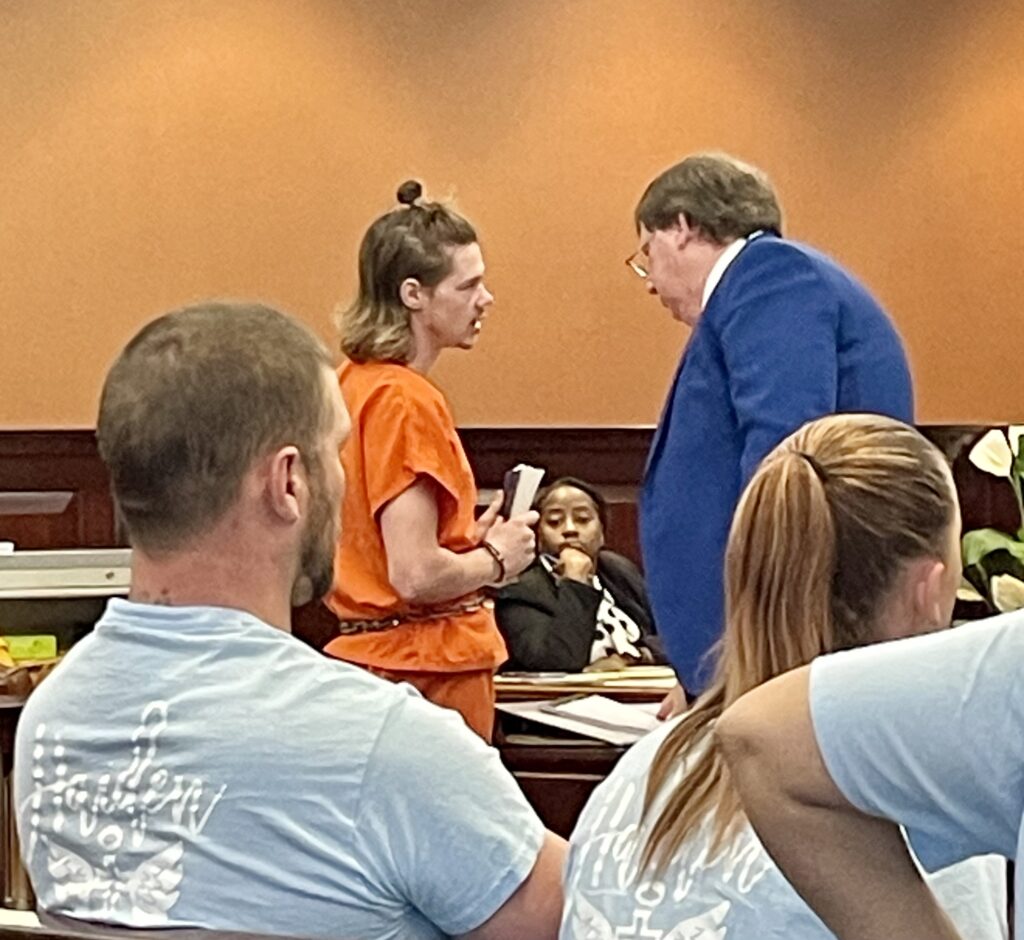Judge rules probable cause existed to arrest Brown with capital murder
Published 4:23 pm Monday, April 15, 2024

- Matthew Brown speaks to his attorney Ray Garrett at the probable cause hearing Monday. (Alyssa Schnugg)
A Circuit Court judge ruled Monday that there was probable cause to arrest Matthew Zachary Brown earlier this month on a charge of capital murder while engaged in felony child abuse.
The probable cause hearing was held Monday morning at the Lafayette County Chancery Building in front of Judge Kelly Luther with the Third Circuit Court.
Brown, 23, was arrested on April 4 after an investigation into the death of a 1-year-old child that was left in his care for four days. The baby was not his child.
Last week, Brown was denied bond. Luther also withheld bond; however, he said if Brown’s case does not go before the grand jury in May, he will allow a bond hearing for Brown’s attorney to argue their case for a bond.
On Monday, Assistant District Attorney Steven Jubera called Investigator Brad McDonald to the stand and asked him what he observed on March 22 when he was dispatched to County Road 520 in Como after a 911 call came in about a child who was unresponsive. It was later learned that Brown’s family members made the 911 call.
According to court records, the baby was dropped off with Brown on March 19 by the child’s mother. Brown told investigators that the baby had hit his head while on a porch swing on March 21 and suffered a bruise under the left eye. He said on Friday, he put the baby down in front of the television and when he returned the child was unresponsive.
Brown was also caring for his two sons, ages 2 and 4 years old at the same time.
McDonald said the child was taken to Baptist Memorial Hospital-North Mississippi, and later flown to Le Bonheur Children’s Hospital in Memphis where he died.
According to a CARES Team’s report from Le Bonheur, the baby had bruises on his face, stomach, back, legs, buttocks, chest, forehead, and both sides of his head as well as an internal brain injury.
He suffered subdural hemorrhaging, a serious condition where blood collects between the skull and the surface of the brain. It’s usually caused by a head injury.
According to the CARES Team report, the head trauma was “nonaccidental” and a child with a subdural hemorrhaging would not be able to eat, sit up or play and would have been unresponsive soon after the injury occurred.
The report said the bruises were at various stages of healing and couldn’t be dated.
Brown was represented by Oxford attorney Ray Garrett.
The case is expected to go before the grand jury on May 13.




